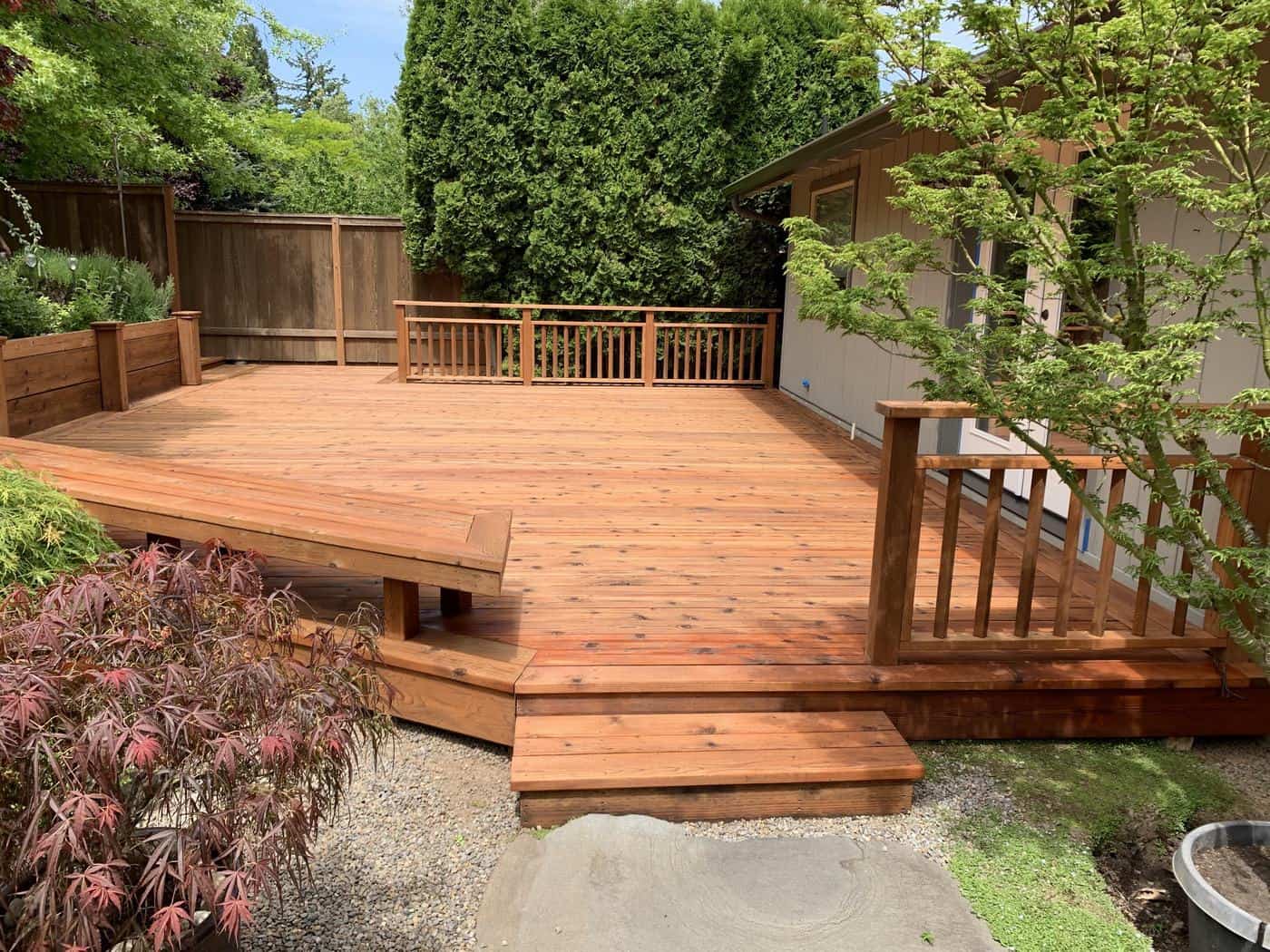Boosted Protection: Fence Staining and Sealing Solutions
Wiki Article
Selecting the Right Discoloration for Your Fencing: Tips and Considerations
When it involves boosting the appearance and preserving of your fencing, picking the right discolor is crucial. With a variety of alternatives readily available, it can be frustrating to figure out which stain will ideal fit your requirements. This guide will certainly supply you with pointers and factors to consider to assist you make a notified choice. We will certainly check out the different types of fencing stains, aspects to think about prior to selecting a tarnish, tips for preparing your fencing for staining, and the differences between water-based and oil-based stains. Furthermore, we will look into picking the right tarnish shade to complement your fencing and improve your exterior room. By adhering to these standards, you can make certain that your fence remains secured and cosmetically pleasing for years ahead.Understanding Various Kinds of Fencing Spots

On the various other hand, water-based spots are made from acrylic or latex and offer a much more subtle color to the wood. Water-based spots are less complicated to clean up and have a much faster drying time compared to oil-based spots.
Selecting between water-based and oil-based discolorations depends on various factors, including individual choice, the wanted appearance, and the degree of upkeep needed. Oil-based spots are suggested for surround high-traffic areas or those frequently revealed to severe climate condition. deck staining. Water-based spots, on the other hand, are a preferred option for surround property locations where look and convenience of use are very important
When choosing the ideal stain for their fencing,Understanding the distinctions in between water-based and oil-based spots aids property owners make an educated choice. Considering the particular demands of the fencing, such as its location, direct exposure to sunlight, and wanted aesthetic, will ensure that the picked discolor provides lasting protection and boosts the general beauty of the fence.
Factors to Think About Before Picking a Discoloration

One more element to consider is the sort of wood your fencing is made of. Various sorts of timber absorb spots in a different way, resulting in differing degrees of shade strength and resilience. For instance, softwoods like ache may require even more frequent staining compared to woods like cedar or redwood. Furthermore, specific timbers may be more vulnerable to problems like rot or insect infestation, which might influence the choice of tarnish to safeguard and maintain the fence.
The environment and climate condition in your location need to likewise be taken into account. You might require a stain that supplies additional security versus wetness and UV rays if you live in a location with extreme winter seasons or high moisture. If your fence is revealed to direct sunlight for lengthy periods, a stain with UV preventions can assist protect against fading and discoloration.
Last but not least, it's essential to consider your preferred aesthetic. Different spots offer numerous shades and finishes, permitting you to tailor the appearance of your fencing (deck staining). Take into consideration the total design and style of your property, as well as any kind of regional regulations or house owner association guidelines that might dictate the acceptable tarnish colors
Tips for Preparing Your Fencing for Discoloration
Cleansing the fence is a crucial action as it eliminates dust, gunk, and any previous finishes that may interfere with the staining procedure. Scrub the surface carefully, paying additional interest to areas with persistent stains or mold and mildew.After cleaning, allow the fencing to completely dry totally. deck staining. This step is crucial as tarnishing a wet or moist surface area can result in inadequate attachment and an uneven surface. Depending on the weather, it might take anywhere from a few hours to a couple of days for the fencing to completely dry completely. Ensure that the fence is entirely dry prior to waging the discoloration process.
Prior to staining, examine the fence for any problems, such as loose boards or nails. Fix any kind of concerns to make certain that the fencing is structurally audio. Additionally, think about applying a wood conditioner or brightener to the surface. This item helps to open the timber pores, allowing the stain to penetrate better and evenly.

Comparing Water-Based and oil-based Stains
When choosing a tarnish for your fencing, it is essential to contrast the characteristics and benefits of water-based and oil-based discolorations. Both sorts of spots have their own benefits and factors to consider, so it is crucial to comprehend the differences in between them.Oil-based discolorations are recognized for their durability and resistance to wear and tear. In addition, oil-based discolorations have a tendency to last longer than water-based discolorations, making them a popular selection for fencings.
On the various other hand, water-based stains are much more eco-friendly and less complicated to cleanse up. They have a reduced VOC (unpredictable organic substance) content, which suggests they release fewer damaging fumes into the air. Water-based spots additionally dry faster, enabling a quicker application and less downtime. They may not provide the very same level of security as oil-based spots, specifically in rough weather condition conditions.
Eventually, the selection between oil-based and water-based spots relies on your specific demands and preferences. Consider variables such as resilience, environmental influence, and simplicity of application when making your decision. Consulting with a professional or looking for suggestions from professionals can additionally help make sure that you pick the best stain for your fencing.
Selecting the Right Spot Shade for Your Fence
The selection of a proper discolor color for your fence is an important facet of boosting its visual appeal and matching the overall layout of your outside space (fence staining nashville tn). The ideal stain color can change a plain, common fence into a striking focal factor that includes depth and personality to your homeWhen picking a discolor shade for your fencing, it is very address important to take into consideration the style and architecture of your home. If you have a typical or classic design home, natural tones such as neutrals and browns can create a cozy and welcoming appearance. On the other hand, if you have a modern or modern-day home, you might take into consideration deciding for vibrant and vivid shades that make a statement.
One more element to take into consideration is the natural surroundings of your home. If you have a great deal of plant, a discolor shade that matches the natural landscape, such as greens or crimsons, can create a cohesive and unified look.
Additionally, it deserves considering the maintenance required for different tarnish colors. Lighter colors often tend to show dirt and put on more easily, while darker colors can conceal imperfections and need less constant touch-ups.
Ultimately, the option of stain color for your fencing should show your personal style and choices - fence staining and sealing. Put in the time to get in touch with and discover various alternatives with specialists if needed, to make certain that you select the perfect stain shade that boosts the beauty and allure of your fence
Final Thought
In verdict, when it comes to selecting the best stain for your fence, it is crucial to recognize the various types of stains readily available and take into consideration elements such as durability and desired look. Choosing the best tarnish shade can boost the general aesthetics of your fence.We will discover the different types of fence spots, aspects to take into consideration prior to selecting a stain, suggestions for preparing your fence for discoloration, and the differences in between oil-based and water-based discolorations.Separating between oil-based and water-based spots is vital when understanding various kinds of fencing discolorations. Water-based spots are easier to cleanse up and have a much faster drying out time contrasted to oil-based stains. Additionally, oil-based discolorations tend to last longer than water-based discolorations, making them a preferred selection for fences.
In conclusion, when it comes to selecting the appropriate discolor for your fencing, it is crucial to recognize the different types of stains readily available and take into consideration elements such as resilience and preferred look.
Report this wiki page